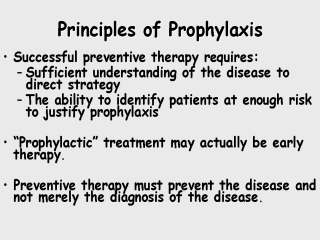 |
I think it's reasonable - as we think about
this big study coming up and I review with you the studies that have been done previously
- to think about the principles that guide prevention of the disease. First of all, to
prevent a disease I think you have to understand it well enough to come up with some
therapy. Also, with a disease like preeclampsia, though it is a major problem, it still
only affects about 3 to 5 percent of pregnant women. So any treatment you have to prevent
that disease is going to treat 95 to 97 women who don't need treatment, so it would be
awfully nice if you could identify patients who are at enough risk to justify prophylaxis
or to have a low risk enough treatment that you can justify treating 100 women to take
care of 5. In the case of preeclampsia, which you'll see with some other diseases too,
what we call prevention may actually be early treatment. Though I've told you that
preeclampsia usually occurs in the last 3 or 4 weeks of pregnancy, in early pregnancy,
there are subtle differences among groups of women. Things like blood pressure taken in
large groups of women will be slightly higher than the women who develop preeclampsia.
It's never good enough to use as a predictor, there's a lot of overlap, but it's enough to
indicate that there are things going on before we make the diagnosis. So maybe what we're
talking about in terms of prevention may actually be treatment. |
